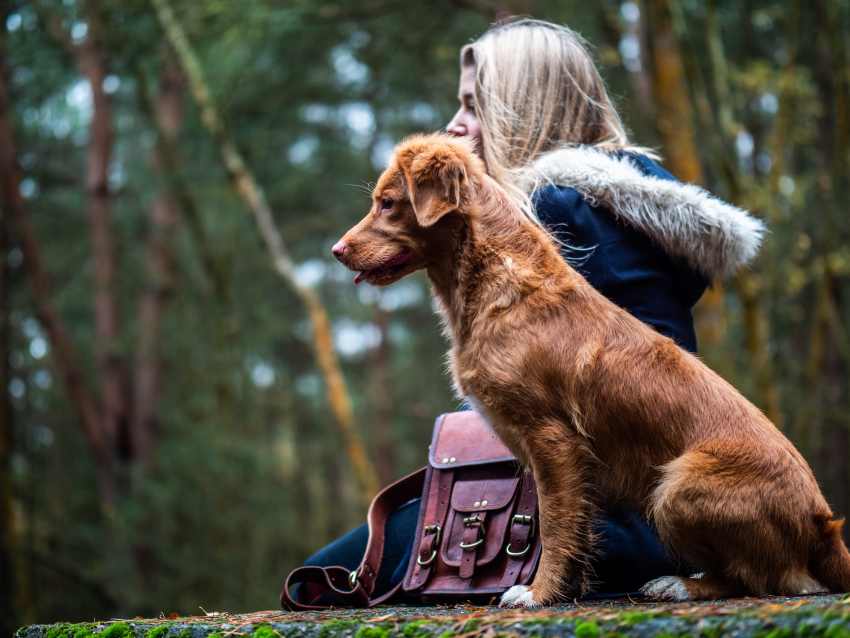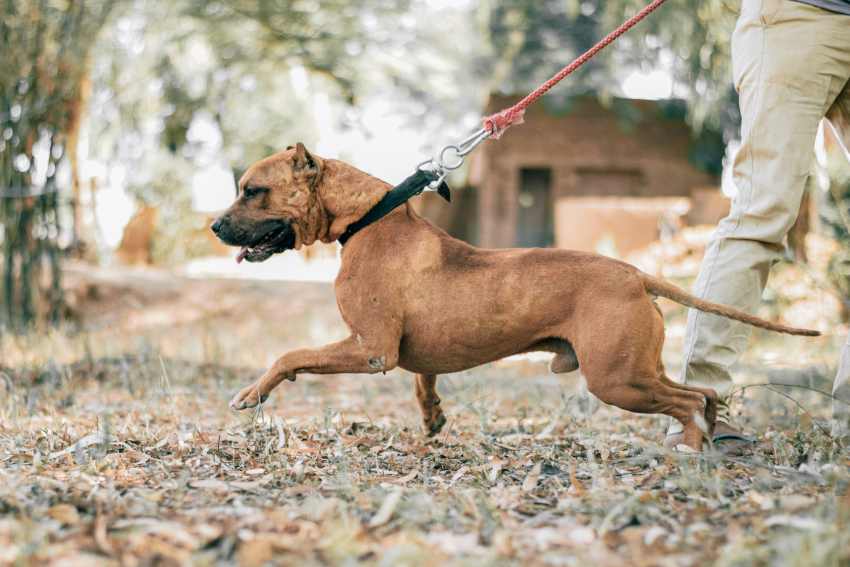Choosing between a dog collar or harness can be a challenging decision for pet owners. Many factors, such as the dog’s size, breed, and behavior, can influence the effectiveness of each option. A harness is often the better choice for most dogs, especially those prone to pulling, as it provides more control and reduces strain on the neck.
Dog collars can be suitable for identification and everyday wear but may not offer the best comfort or safety during walks. Harnesses distribute pressure more evenly across a dog’s body, making them a safer option for active or strong dogs. Understanding these differences can significantly improve a dog’s walking experience.
Pet owners should take into consideration their dog’s specific needs before making a choice. With the right equipment, walks can become more enjoyable and secure. By considering factors like behavior and comfort, the best option for both the dog and owner can be identified.

Understanding Canine Anatomy and Equipment
Awareness of a dog’s anatomy is crucial when selecting between collars and harnesses. The right equipment can enhance safety, control, and comfort for dogs during walks and training.
Impact of Collars and Harnesses on a Dog’s Neck
The neck is a sensitive area for dogs. Applying pressure through collars can lead to neck injuries over time. Standard collars may compress the trachea, especially if the dog pulls or lunges.
Choke collars and prong collars can exacerbate this issue, creating an increased risk of injury. A veterinarian may recommend avoiding these types for certain breeds or individual dogs. For walking and training, a collar should provide identification, like ID tags, without causing discomfort.
Types of Dog Collars and Their Functions
Several types of collars exist, each serving specific functions:
- Flat collars: Ideal for daily wear, they allow for essential identification tags.
- Choke collars: Used for training but may harm sensitive neck areas.
- Prong collars: Designed for control, often controversial due to safety concerns.
- Martingale collars: Safe for narrow-headed dogs, preventing them from slipping out.
Selecting the right collar depends on the dog’s behavior and specific needs. A vet can assist in determining the best option to avoid potential injuries while providing adequate control.
If you’re thinking of investing in a Martingale Dog Collar, here’s a link to the one I recommend!
*This page contains Amazon.com Affiliate links, which means that I may earn a small commission should you buy a product featured on this page. At no extra cost to you.
Harness Varieties and Their Uses
Harnesses distribute pressure more evenly across a dog’s body. This can reduce the risk of neck injuries associated with collars.
Standard harnesses wrap around the dog’s body, providing secure control. They are suited for general use, especially for dogs that pull.
Front-clip harnesses connect the leash at the chest, directing the dog’s movement more effectively. These are beneficial for training to discourage pulling.
Head halters can also be beneficial for dogs that require extra control without applying pressure to the neck. Harnesses enhance visibility, safety, and comfort during outings. Using the appropriate harness promotes a better walking experience for both dog and owner.
If you’re thinking of investing in a No-Pull Dog Harness, here’s a link to the one I recommend!
Choosing the Right Gear for Your Dog
Selecting the appropriate gear for a dog is essential for its safety, comfort, and overall training effectiveness. Proper fit plays a significant role, as does an understanding of the pros and cons of collars and harnesses.
The Significance of Proper Fit and Comfort
A well-fitted collar or harness is crucial for the dog’s comfort and safety. For example, a collar that is too tight can harm the dog’s neck and restrict breathing, particularly for small breeds like a pug. Conversely, a loose collar may slip off, leading to escape.
Harnesses distribute pressure more evenly across the dog’s chest, which is especially beneficial for training. They prevent strain on the neck during walks, reducing the risk of injury. It’s important for dog owners to measure their pets accurately to ensure a proper fit. This involves checking neck circumference for collars and chest girth for harnesses.
Inadequate fitting gear can lead to behavioral issues and discomfort. Owners should always assess how their dog moves while wearing the gear to ensure it supports their unique shape and size.
Factors Influencing the Decision: Pros and Cons
When choosing between a collar and a harness, several factors come into play, including the dog’s behavior and the owner’s training goals.
Collars: Pros and Cons
- Pros: Easy to put on, suitable for ID tags, and generally more affordable.
- Cons: May cause neck injuries when pulling, especially in small dogs or breeds with sensitive throats.
Harnesses: Pros and Cons
- Pros: Better control during walks, reduced strain on the neck, and ideal for training.
- Cons: Can be more cumbersome to put on and remove, and may not suit all breeds.
Ultimately, the choice depends on the individual dog’s needs and the owner’s preferences. Both options have unique advantages and disadvantages that should be carefully evaluated to find the best fit for each situation.
Training and Behavior Considerations
Choosing between a collar and a harness involves understanding their impact on training and behavior. Each option has unique advantages that align with different training goals and everyday needs.
Harnesses for Training and Reducing Pulling
Harnesses are particularly effective for dogs that pull during walks. They distribute pressure across the dog’s body instead of concentrating it on the neck. This not only reduces the risk of injury but also offers better control.
Training a dog to walk without pulling can be enhanced with a front-clip harness. This design allows the handler to redirect the dog’s attention with minimal effort. When the dog pulls, the harness turns them toward the owner, helping them learn more desirable walking habits.
Dog trainers often recommend harnesses for puppies and dogs in training. These tools provide gentle guidance during the learning process, fostering positive associations with leash walking. Owners may find harnesses beneficial for daily use, especially for dogs prone to neck strain from traditional collars.
Collars for Identification and Everyday Use
Collars are essential for identification purposes. An ID tag displaying the owner’s contact information is crucial in case the dog gets lost. Collars can hold various identification tags securely without interfering with daily activities.
For everyday walks, traditional collars are effective for dogs that do not pull. A well-fitting collar keeps the dog comfortable while allowing for effective communication with leash commands. Collars can serve as a training tool when used correctly, helping to reinforce basic obedience commands.
It’s important to use the appropriate collar for a dog’s behavior. If training focuses on identification and basic control without intense pulling, a collar may suffice. Regular checks on the collar’s fit ensure the dog’s safety and comfort during daily activities.
Practical Insights for Dog Owners
Choosing the right equipment is essential for ensuring comfort and safety during walks. Understanding how leash attachments affect control and the importance of quality pet supplies can lead to a better experience for both the dog and the owner.
Leash Attachments and Dog Control
The choice of leash attachment has significant implications for control during walks. With a collar, the leash attaches at the neck, which may be suitable for calm dogs. However, this can increase the risk of injury, especially for strong pullers.
Opting for a harness often provides better control, distributing pressure across the chest rather than the throat. This makes it ideal for dogs that tend to pull. Various designs, including front-clip harnesses, promote better training outcomes by preventing the dog from pulling forward.
Using a retractable leash can offer flexibility, allowing dogs to explore while maintaining control. However, caution is necessary to avoid tangling with other dogs or obstacles.
- Small Retractable Dog Leash is Suitable for Dogs Under 35 lbs; Medium For Dogs Under 55 lbs; Large For Dogs Under 110 lbs; Retractable Leashes Not Suitable For Chewing
- 16 ft Tape Retractable Dog Leash With Easy-Adjust Retraction; 360 Degree Tangle-Free Inlet
- Quick Lock And Unlock Feature – Easy Roll-On and Roll-Off With Your Thumb
- Super Comfortable Grip For Those Long Walks! Ergonomic Anti-Slip Handle
- Heavy Duty Internal Coil For Consistent Retraction and Recoil
The Role of Pet Supplies in Dog Safety
Quality pet supplies play a crucial role in ensuring a dog’s safety while walking. Harnesses designed with reflective materials increase visibility during low-light conditions. This is essential, as many accidents happen during evening walks.
Collars should have an ID tag that includes contact information. It’s also advisable to choose collars that break away under pressure. This feature can prevent choking if the dog gets caught on something.
Comfort is paramount. A padded harness can prevent discomfort and chafing, especially for long walks. Owners should regularly check the fit of collars and harnesses to accommodate changes in the dog’s size or weight.
Investing in high-quality gear not only enhances safety but also contributes to a more enjoyable walking experience for both the dog and the owner.
Special Considerations for Specific Dog Breeds
Different dog breeds have unique characteristics that can influence the choice between a collar and a harness. For certain breeds, specific features need to be prioritized to ensure comfort and safety.
Harnesses for Dogs Prone to Breathing Issues
Breeds like pugs and bulldogs are particularly prone to breathing issues. For these dogs, a harness is often the better choice because it distributes pressure across the chest rather than concentrating it on the neck. This reduces the risk of choking or airway obstruction.
When selecting a harness, it’s essential to ensure a proper fit. A well-fitted harness allows for movement without restricting the dog’s ability to breathe comfortably. Look for harnesses that have soft padding and adjustable straps to accommodate the unique shape of these breeds.
Collars for Dogs with Neck Sensitivities
Some breeds, like greyhounds, require special attention due to their neck sensitivity. Using a choke collar or any equipment that applies pressure on the neck can lead to injuries or discomfort. A traditional collar may still be suitable, provided it is lightweight and designed to prevent strain.
For sensitive-necked dogs, a flat collar made from soft materials is advisable. It should fit snugly without being too tight, allowing for one to two fingers underneath. This avoids choking while still securing the dog’s ID tags and leash. Careful selection can enhance the dog’s comfort during walks.
Maintaining and Replacing Gear
Regular maintenance and timely replacement of collars and harnesses are essential for ensuring a dog’s safety and comfort. Dog owners should be attentive to signs of wear and know how to properly care for their pets’ gear.
When to Replace or Upgrade Your Dog’s Collar or Harness
Collars and harnesses should be replaced if there are visible signs of wear, such as fraying, cracking, or fading. For those made of leather, look for any signs of dryness or brittleness, as these indicate that the material may soon break. For nylon options, inspect for any loose threads or a weakened buckle.
An upgrade might be necessary if the dog has outgrown its gear or has developed new behavioral needs. For instance, a growing puppy may require a larger collar or harness. Additionally, consider upgrading if the collar or harness does not fit securely, as improper fittings can pose safety risks.
Tips for Maintaining and Cleaning Collars and Harnesses
To prolong the life of a collar or harness, regular cleaning is crucial. Most nylon collars can be hand-washed with mild soap and warm water, while leather gear may benefit from specific leather cleaner and conditioner.
Inspecting the equipment regularly is also essential. Dog owners should check for any dirt buildup, especially around buckles and clasps. Light dirt can often be removed with a damp cloth. For persistent stains, a soft brush can be used.
Finally, avoiding exposure to harsh elements, like prolonged sun or rain, can help maintain the integrity of both leather and nylon materials. Properly storing gear in a cool, dry place will further extend its lifespan.
FAQs: Dog Collar or Harness
This section addresses common inquiries regarding the use of collars and harnesses for dogs. Specific advantages and disadvantages, along with considerations for different dog types, will be explored.
What are the pros and cons of using a harness versus a collar on dogs?
Harnesses distribute pressure more evenly across a dog’s body, reducing strain on the neck. They can be more comfortable and may prevent injuries.
Collars are simpler to use and ideal for holding ID tags. However, they can put too much pressure on the neck, especially if the dog pulls.
How do I choose the best option between a collar or a harness for a small dog?
For small dogs, a lightweight harness is often preferable to reduce neck strain. It is essential to ensure it fits securely without being too tight to avoid discomfort.
A collar can work well for small dogs but may not provide the best control or safety during walks.
For a dog that tends to pull, which is more suitable, a collar or a harness?
Dogs that pull often benefit from a harness designed for no-pull. These models can discourage pulling by providing control at the chest rather than the neck.
Using a collar on a strong pulling dog can lead to injury and poor walking behavior.
Are there any specific advantages of using a harness over a collar for puppies?
Harnesses can help puppies feel secure while they learn to walk on a leash. They prevent choking during those energetic pulls that puppies often exhibit.
Additionally, some harnesses have adjustable features that accommodate a growing puppy.
Between a harness and a collar, which provides better safety for large breed dogs?
Harnesses are generally safer for large breed dogs as they distribute force evenly across the body. This can prevent injuries that collars may cause when a large dog pulls.
Collars can be effective for identification but may not offer the best control and safety when walking larger dogs.
Can a harness contribute to any disadvantages in a dog’s behavior or health?
Some dogs may become reliant on harnesses, leading to aversion to collars. Additionally, certain harness styles can cause chafing or discomfort if not fitted properly.
It is important to monitor the dog’s behavior and comfort level when using a harness to mitigate these potential issues.
Understanding the Challenges of Dog Training: The Importance of Effective Training for Dog Owners

Effective training is the key to transforming troublesome pups into well-behaved companions. By investing time and effort into training techniques that emphasize positive reinforcement, you can build a strong bond with your dog, promote good behavior, and enhance safety. Remember, dogs are not born knowing how to behave; they rely on their owners to guide and teach them.
Continue reading: Understanding the Challenges of Dog Training
Preventing Leash Pulling: A Guide to Training Your Dog for Pleasant Walks

One of the primary reasons dogs pull on the leash is a lack of proper leash training. Like any behavior, walking nicely on a leash requires consistent training and reinforcement of the desired behavior. Another common reason is excitement and eagerness to explore.
Continue reading: Preventing Leash Pulling


